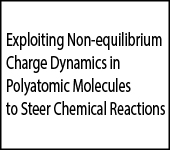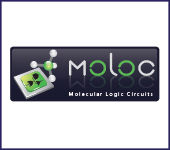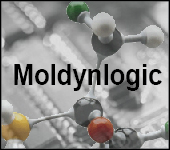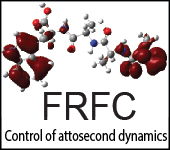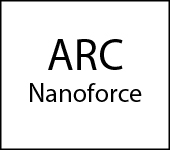International projects
Exploiting Non-equilibrium Charge Dynamics in Polyatomic Molecules to Steer Chemical Reactions
The main objectives of this proposal are to achieve two major research goals of ultrafast science:
1. Creating and probing photo-induced charge migration dynamics of pure electronic origin on the attosecond to few femtoseconds time scales and studying the role of non-equilibrium charge distributions in inducing selectivity of chemical reactions in polyatomic molecules.
2. Achieving mode-selective chemistry in polyatomic molecules using intense ultrashort mid-infrared pulses.
Scientific Discovery through Ultrafast Materials and Chemical Sciences, Department of Energy, United States
European reseach
MULTI replaces the familiar sequential model of computation that uses Boolean variables and combinational gates by logic operations that are executed in parallel on devices that have a built-in many state memory and whose inputs and outputs are multivalued. MULTI seeks to design, simulate and experimentally implement proof of principle devices on the atomic and molecular scale.
MULTI refers to the unique novel characteristics of the proposed schemes. We use
MULTI-level logic variables as opposed to two valued Boolean variables. ...
FP7 FET proactive MULTI, coordinator, 2012-2015 (unconventional computing)
TOLOP comprises investigations into three of the levels necessary for a paradigm shift in low-power electronics:
1. Fabrication and measurement of devices which are inherently low-power in switching operation at room temperature.
2. Theory of specific device implementations for each of those technologies to explain and validate the principles behind their low-power capabilities.
3. Design of architecture to enable the circuit operation of these technologies for overall low-power circuit operation. ...
FP7 FET proactive TOLOP, 2012-2015, leader of WP3 (minimizing energy in computing)
MOLOC – Molecular Logic Circuits seeks to design and provide demonstration of principle, feasibility and significant advantages of logic circuits where the basic element is a single molecule (or assemblies of atoms or molecules) acting in itself as a logic circuit. The functionalities provided by this new post-Boolean approach differ in essential ways from using a molecule as a switch. The approach depends on molecules (or nanostructures, etc) having internal degrees of freedom and multiple (quasi)stationary states by virtue of their confined size. We therefore make an advantage of the nanosize which is imposed by the cardinal technological need to reduce the size of the circuit in order to implement complex logic functions at the hardware level and thereby add new functionalities. ...
FP7 FET proactive MOLOC, coordinator, 2008-2011 (molecular logic and new functionalities)
MOLDYNLOGIC is a high risk project exploring the implementation of combinational logic circuits and finite state computing machines based on a single molecule or assemblies of molecules. Our exploratory work, validated by experiments, has shown that it could be possible to achieve programmable machines on a single molecule and also to concatenate the logic operation of two molecules.
MOLDYNLOGIC proposes more complex finite state machines, and furthermore, machines which have the ability to perform many cycles. Towards this aim, it gathers a team of European experts in synthesis and supramolecular chemistry, electrochemistry, laser chemistry and theory. The project will demonstrate the construction and assembly of chemical systems with logic and computational functionalities. ...
French Community of Belgium
Our project aims to develop the theory and modeling tools necessary for controlling reactivity in molecules and nanostructures, based on the attosecond excitation of non-equilibrium states. The project focuses on non-equilibrium, multi-timescale, electron and ion dynamics, going all the way from the shortest time scale attainable (the atto to few fs (or subfs) range needed to excite a non-stationary state for the electrons) up to the time scale describing the targeted physicochemical outcomes of the excited system, which is longer by up to four orders of magnitude when the atoms have to move substantially. ...
FRFC : Control of attosecond dynamics, 2012-2016, coordinator
Extreme miniaturization is made necessary by the steadily increasing requirements of information technologies and smart sensors, which are expected not only to detect and quantify the presence of a substance but also to handle in situ, in a simple way, the information obtained [1-5]. The implementation of physical systems able to handle the information at the nanometric and molecular scales calls for a strong basic effort aiming at a better understanding of the forces governing at those scales the interactions between the constitutive subunits and between the latter and the substrate. ...
ARC Nanoforce, Partner, 2009-2014.
